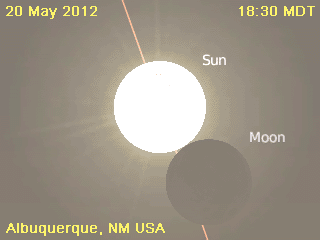
 On July 4, 1054, in ancient China, a Chinese astronomer noticed an amazing thing! A Star bright enough to be seen in broad daylight! He recorded the event calling the mysterious star a “Guest Star”. He noted that it was four times brighter than Venus. After about 23 days, the star moved to the night sky and was noted by astronomers in Arabia, Japan, and even here in America.
On July 4, 1054, in ancient China, a Chinese astronomer noticed an amazing thing! A Star bright enough to be seen in broad daylight! He recorded the event calling the mysterious star a “Guest Star”. He noted that it was four times brighter than Venus. After about 23 days, the star moved to the night sky and was noted by astronomers in Arabia, Japan, and even here in America.The native American astronomer, an Anasazi living in Chaco Canyon, noted his discovery by painting the star and its position related to the crescent moon on the underside of a cliff shelf. He even signed his drawing with his hand print. The petroglyph can still be seen below West Mesa in Chaco Canyon, just outside the great house called Peñasco Blanco.
Out of curiousity, I ran my astronomy program “Starry Night” and set the date back to 1054. I let the program sequence through the night sky starting July 4th. What I found was that the star (we know it today as M1, the Crab Nebula) was indeed in the day sky at first. Later it progressed to the night sky. Below is a screen print from my Starry Night program showing the Crab Nebula approaching the moon. Compare its position to the moon compared to the petroglyph!
Over time, the star dimmed until it was just a faint fuzzy spot in the constellation Tauras.
The object was rediscovered in 1731 by John Bevis who added it to his sky atlas, Uranographia Britannica. In 1758, the astronomer, Charles Messier, independantly discovered it again. Only, Messier was very disappointed with his discovery. Messier was looking for the comet Haley that was predicted to return. When he spotted the fuzzy object in the vicinity of where he expected to find the comet, he assumed he had found a comet! When the fuzzy object did not move after observing for several days, he knew that it was not a comet but a nebula. Frustrated, he declared that there should be a “catalog” of known objects so that astronomers would not have to continue to “rediscover” them. The fuzzy nebula became “M1” in Messier’s now famous catalog. Messier later learned of Bevis’ discovery and gave him credit in a letter. Ironically, M1 was again confused with Haley’s second predicted return.
So what was the bright star of 1054? It was the first recorded “Super Nova”! “Super Nova” is the term given to the event of a star exploding! When it first exploded, it was extremely bright. But as the debris separated, it became dimmer and dimmer. J.C. Duncan of Mt. Wilson Observatory compared photographic plates taken 11.5 years apart, and found that the Crab Nebula was expanding at an average of about 0.2" per year. Backtracing of this motion showed that this expansion must have begun about 900 years ago. Simultaneously, Knut Lundmark, with the Astronomical Society, noted the proximity of the nebula to the 1054 supernova.
If the picture doesn’t remind you of a crab, you’re not the only one. It was christened the “Crab Nebula” based on drawings made by Lord Rosse in 1844. Want to see it for yourself? You will need a good pair of binoculars (10X50 or better). The nebula is located in the horn of the constellation of Tauras. Go to http://www.telescopes.com/findcrabnebula_lp.cfm for steps to help you find it.





